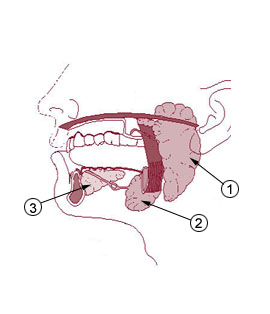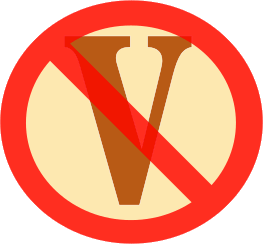TEETH HEALTH REMEDIES

 Categories in DigestionAppetiteStomachSmall IntestineColonAnal RegionMouthTeethPancreasAbdominal Pain LocationAbdominal Pain TypeAlarm SymptomsOverviewTeeth should be a bright white. If they appear yellowish or gray, that is also a sign of toxins. To be thorough, check the color of the back of the throat and the underside of the tongue as well. Even if you don't know what the signs means, check your tongue in the mirror every day. To keep your mouth healthy, brush your teeth, floss, and scrape your tongue every day. Avoid foods that leave a bad taste in your mouth 20 minutes later. Avoid chewing gum. Don't know your body type? Take our free Dosha quiz!
TAKE THE QUIZ
     (5.00 out of 5 stars) 1 rating, 11 likes (5.00 out of 5 stars) 1 rating, 11 likes SAVE SYMPTOM SAVE SYMPTOMTooth discoloration is when the teeth are an abnormal hue, color, or translucency. It can be caused by stain producing substances such as tobacco, coffee, red wine, and sodas. Aging can also cause changes in the color of tooth enamel. In Ayurveda,... 19 likes  SAVE SYMPTOM SAVE SYMPTOMGray teeth indicates Vata type toxic buildup. The most common cause of Vata ama is constipation, gas and bloating. 34 likes  SAVE SYMPTOM SAVE SYMPTOMYellow teeth could indicate high levels of bilirubin in the blood, and implies aggravated Pitta in the liver. 5 likes  SAVE SYMPTOM SAVE SYMPTOMDental surgery is a medical procedure performed on the teeth and jaw bone. Missing teeth can significantly impact your ability to chew food. Improperly chewed food can sit undigested in the GI tract, leading to gas, bloating, and the formation of... 5 likes  SAVE SYMPTOM SAVE SYMPTOMBraces are used to straighten and reposition misaligned teeth. Dentures are prosthetic devices used to replace missing teeth. The need for braces has become more common in recent years due to a diet of highly processed foods, especially sugar. In... 9 likes  SAVE SYMPTOM SAVE SYMPTOMDental amalgam is a substance commonly used to fill cavities caused by tooth decay. It is made from a mixture of metals, containing 50% mercury. These fillings release low levels of mercury vapour that is absorbed into the body. The FDA have deemed... 14 likes  SAVE SYMPTOM SAVE SYMPTOMCauses of frequent cavities Articles about tooth decay prevention advise regular brushing and flossing of teeth along with avoiding sugary foods like candy and sodas as main ways to stay cavity free. While these are a good... 17 likes  SAVE SYMPTOM SAVE SYMPTOMSweet, thick Kapha blood is very attractive to microbes. Soon after brushing the teeth, these microbes proliferate in the mouth once again. Indigestion creates toxicity that is especially attractive to infectious diseases. 7 likes  SAVE SYMPTOM SAVE SYMPTOMA toothache can be a sign of a tooth infection, or cavity. Toothache may be more severe after a meal, especially sugary foods. 15 likes  SAVE SYMPTOM SAVE SYMPTOMWorn tops of teeth occurs when enamel, the protective coating, starts to deteriorate. When this happens, the teeth can become sensitive and are more prone to decay. Teeth become somewhat worn from general use, but more advanced cases are caused by... 18 likes  SAVE SYMPTOM SAVE SYMPTOMA tooth fracture is a cracked or broken tooth. It is commonly caused by severe force that compromises the protective layers of the tooth - enamel and dentin. A tooth can also crack from general wear and tear. Tooth fractures can lead to considerable...  MORE DIGESTION TIPSDISCLAIMER: The pathogenesis of each person's condition is unique, and so the diet must be fit to the individual and the unique root causes of the condition in your body. The information on this page is for educational purposes only and should not be used to treat a medical condition. It is not a substitute for medical care. Please check with your doctor before making any changes to your health and wellness routine. HOW AYURVEDA WORKSARE YOU WONDERING HOW AYURVEDA CAN HELP YOU?WHY IS AYURVEDA THE RIGHT SOLUTION?Ayurveda strengthens the body while opposing disorders. It takes a holistic, systemic approach that looks at the whole body. Ayurveda shows how to interpret signs and symptoms of imbalance, and how to address them using diet, lifestyle adjustments, and herbs. It shows a person how to optimize their health on a continual basis. You can't take the doctor home with you, but you can take Ayurveda home with you. Ayurveda is the most advanced and easy to use home system for self healing.HOW DOES AYURVEDA WORK?Ayurveda starts by identifying your body type, which identifies certain tendencies in your body to get sick (as well as identifying your strengths). It uses body type to determine the likely root causes of your disorders. Next, Ayurveda analyzes the nature of your disorder. It fits all your signs and symptoms into a pattern, expressed as a combination of biocharaceristics (gunas). For example, you may have a heat disorder, a cold disorder, or an oily disorder, etc. This simple categorical approach shows you how to correct systemic imbalances and strengthen your body as a whole.On Joyful Belly, we've created an extensive categorization of food so you can easily match food to your imbalanced biocharacteristics. By eating an optimal diet that balances your biocharacteristics, your whole body is strengthened and the conditions that created the disorder are removed. Once the root causes of the disease are removed, the disease lessens in strength or disappears altogether. Additional remedies - such as herbs and lifestyle practices - focused on the specific disorder, can greatly enhance your healing. GET STARTEDTo get started on your Ayurvedic journey, we first recommend that your find your body type by taking our free quiz. In Ayurveda, every solution is based on your unique body type, so by taking this quiz, you’ll get the best results. |
Join Joyful Belly.
Want our top Ayurvedic recipes and health tips?Subscribe to our free newsletter!











